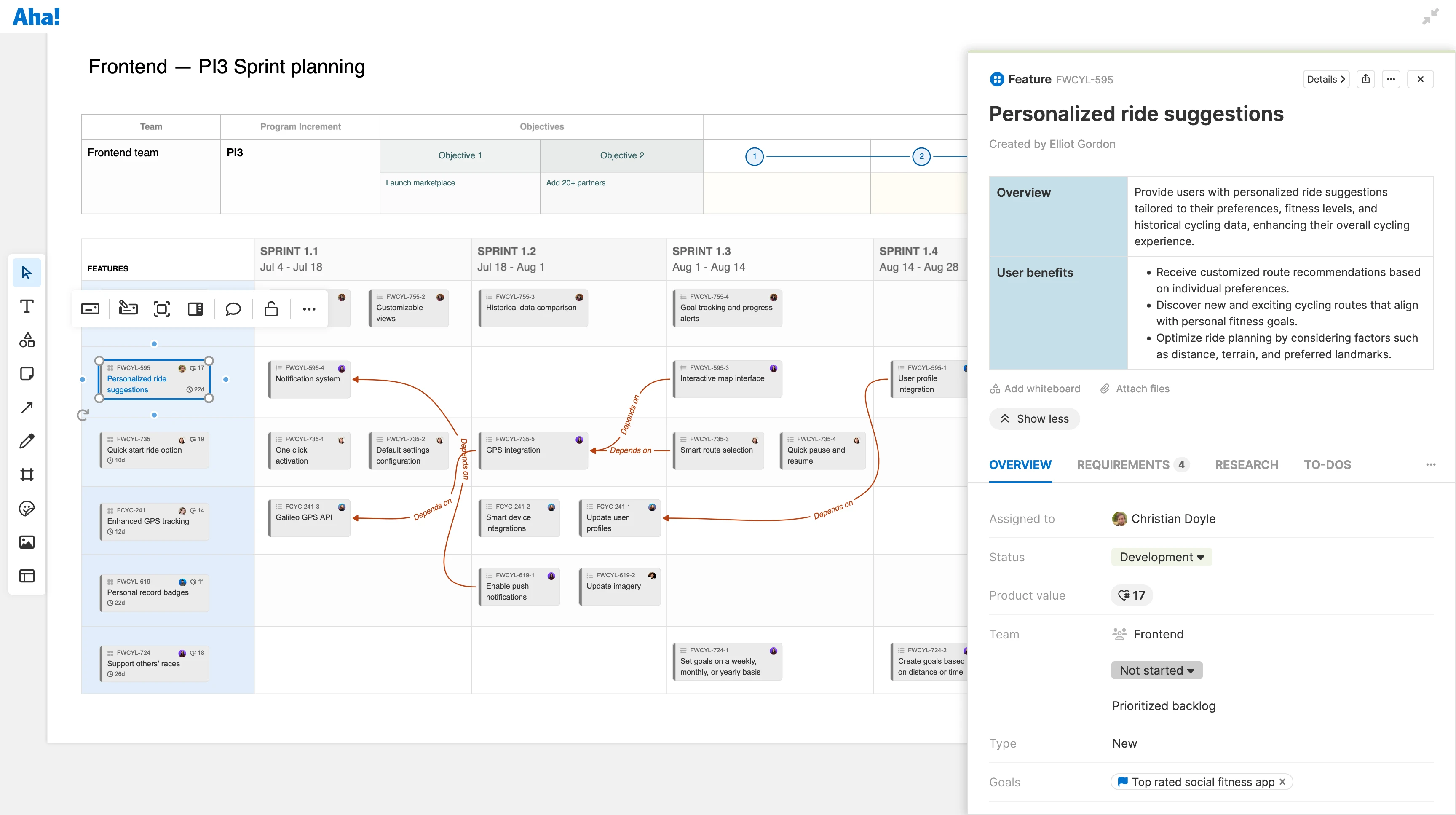


Software development is a highly collaborative endeavor. Use built-in whiteboarding capabilities throughout the process to explore technical options, align on architectural decisions, and support agile practices. Go from vetting new concepts to building brilliant solutions in one seamlessly integrated tool. Consolidate your tool stack and save costs at the same time.

Establish a shared understanding of how to implement new product experiences. Create a user story map or user flow diagram to quickly align on what matters most with product and UX. Use Aha! shapes to represent epics, features, and requirements as you break down the work. Turn them into actual work items when you are ready to take action — no data reentry needed.

Illustrate software systems and processes. From architectural diagrams to UML class structures and sitemaps, use powerful drawing tools to expand technical understanding. Find all the shapes, connectors, labels, and icons you need to show how components interact with one another. Include these diagrams in your technical documentation for easy access.

Find creative solutions to technical challenges. Brainstorm different approaches on a whiteboard, sketching out pseudocode and logic flows to design effective algorithms. Work side by side to challenge assumptions and suggest optimizations. Inline comments make it easy to ask questions and gather feedback. Harness the power of collective thinking to ensure you build the best software possible.

Refine your delivery plans. Pull existing work items onto a whiteboard and move them around freely. Lay out work across multiple sprints, or use an interactive timeline to sequence everything in the correct order. Highlight existing dependencies and identify new ones to reduce delivery risks. Open up record cards to quickly update the details and formalize the plan.

Make sprint retrospectives more engaging. Gather input from everyone on the team — before or during the session — to have a meaningful discussion about what went well and what to improve. Include agile reports directly on your whiteboard to make velocity and burndown data easy to reference. Capture what the team will do differently, and assign action items to drive continuous improvement.